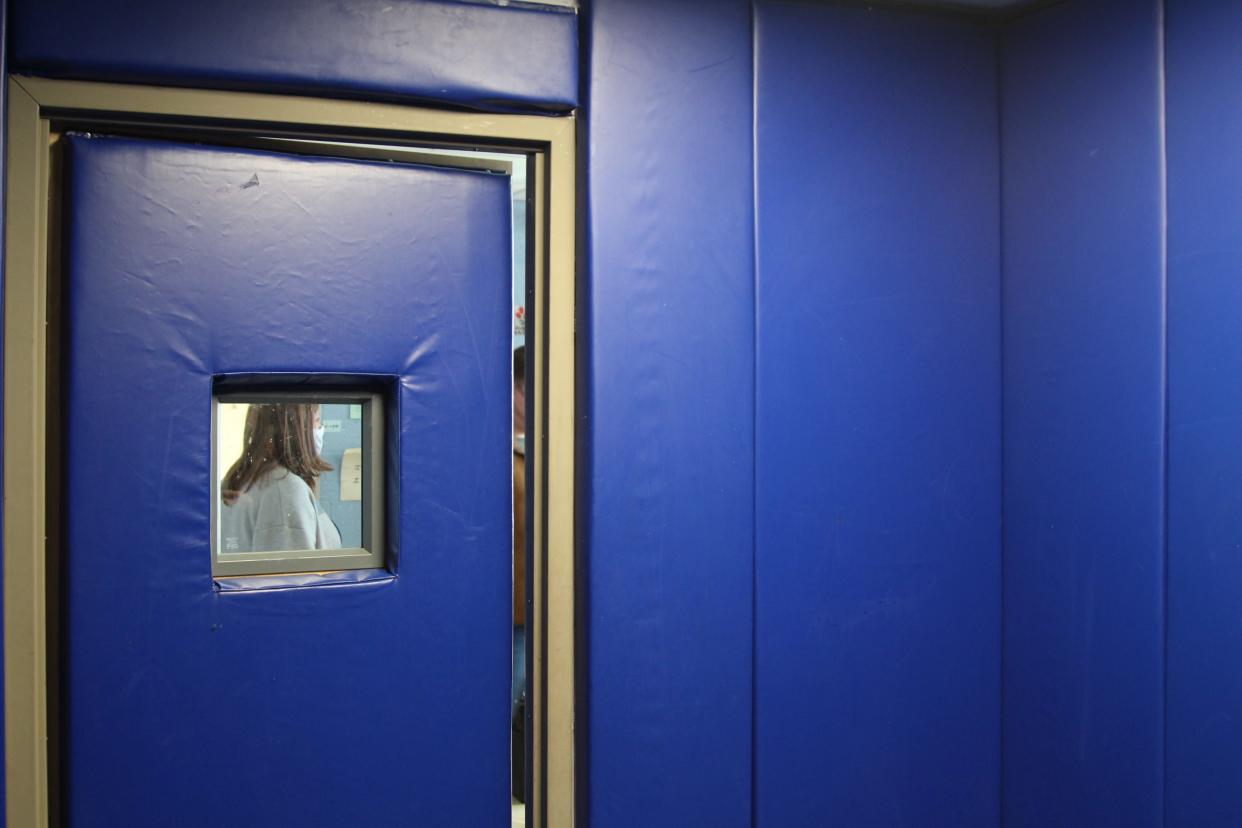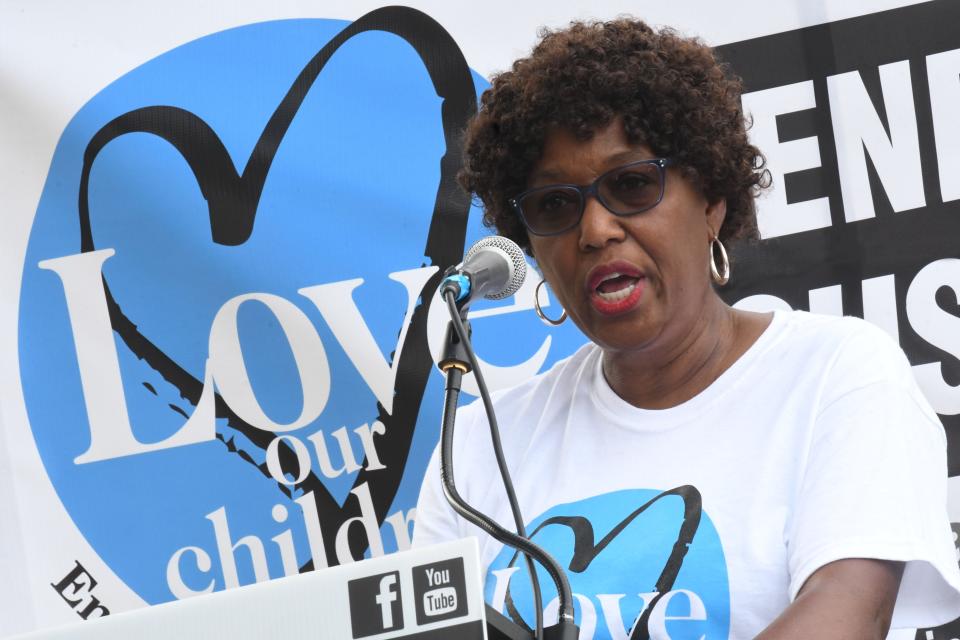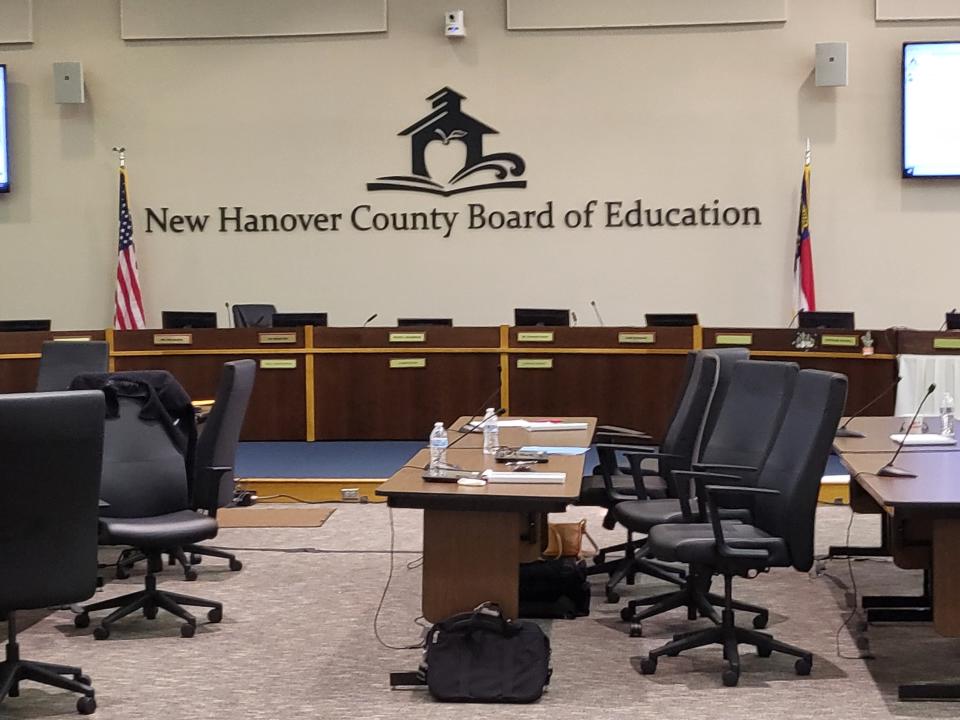School officials say use of seclusion rooms is dropping; some education advocates disagree

District leaders and community members spent much of the fall debating the use of seclusion rooms in schools across New Hanover County. As that debate raged in public, it appears the use of these isolated rooms was declining, according to figures district staff recently shared with the school board.
The seclusion rooms are an essential tool for educators to help protect students, they say, but parents and community advocates considered them inhumane, and pushed the school system to get rid of them. Four months ago, the board of education voted to end the use of seclusion rooms starting in 2023-24 school year.
New Hanover County school officials say the use of seclusion rooms is dropping thanks to policy changes and staff training, Between August and December, for example, use of seclusion rooms dropped by nearly a third, according to data provided by the school district.
But both community advocates and educators say the district’s numbers don’t necessarily reflect what’s truly going on. Community advocates say incidents of seclusion declined far less than what the school board was told. Educators say while seclusions are declining in some places, the district hasn’t addressed the main problem, putting staff in harm’s way.
District's numbers might be providing incomplete picture
There were 58 incidents of seclusion between August and December of this school year, said Julie Varnam during the Feb. 7 school board meeting. During the same period in the previous school year, there were 142 incidents of seclusion, said Varnam, who serves as the assistant superintendent of support services for NHCS.
Peter Rawitsch said incidents of seclusion have declined far less than what the district stated publicly. Between August and December, there were 112 incidents of seclusion at just the elementary school level, according to Rawitsch, who sourced that information from statistics NHCS provided to him as part of a public records request.
Background:School seclusion rooms: What are they, why are they used and are they safe for students?
These incidents were concentrated at a handful of schools including Lake Forest Academy, Forest Hills Elementary and Murrayville Elementary, according to the statistics NHCS provided to Rawitsch.
It’s unclear exactly how exactly the school system established its numbers presented to the school board on Feb. 7, said Veronica McLaurin-Brown, who with Rawitsch has advocated against the use of seclusion rooms through their organization Love Our Children.

The information Varnam presented to the school board was cumulative data. McLaurin-Brown wants the school system to disaggregate its data so the public can get a true picture of the situation.
What is clear from Rawitsch’s data is that 42 schools didn’t have a single seclusion between August and December, which is worth celebrating, McLaurin-Brown said.
However, the reason so many schools haven’t reported a single incident of seclusion might have less to do with the situation improving and more to do with staff being told to simply not use the measure at all.
STAY CONNECTED: Keep up with the area’s latest news by signing up for the Daily Briefing email newsletter.
“We're pretty much told that do not use seclusion rooms,” said Lisa Espy, secretary for the New Hanover County Association of Educators and a school counselor at one of NHCS’ elementary schools.
Rather than use the seclusion rooms, students experiencing emotional outbursts are now tearing up classrooms, and in some cases injuring staff, Espy said.
“I've been in rooms where a kid was tearing up the room because they’re going through a crisis,” Espy said. “While they're tearing it up, we have to clear the room, so we're sending other kids somewhere else, and we literally have to just stand there and watch them have a tantrum until they're tired.”
Seclusion rooms offered students a safe environment while they went through these emotional episodes, Espy said. Rather than kick or punch a cinderblock wall, students could vent their frustration in a padded environment, Espy said.
More:Close school seclusion rooms next year, New Hanover parents and advocates say
Without those rooms, students are now forced to experience these episodes in the classroom, causing the entire class to lose instructional time, Espy said.
“Meanwhile the staff that are in the room are being injured, and some of them are quitting,” said Cynthia Silva, president of NHCAE. “This is not a viable solution.”
Addressing the main problem
Ending the use of seclusion doesn’t address the real problem, educators say. It only eliminates a tool staff used to help control the situation. What really needs to get addressed is students’ mental health.
Many students were depressed and anxious during the COVID-19 pandemic, and they’re still processing those issues, Espy said. Right now, the school system doesn’t have enough mental health resources to help those students.
More:Secluded in school for almost 1,900 minutes: kindergartener's family tells details
Families have to wait three to six months to get help, Espy said. That’s due in large part to the fact that there aren’t enough school counselors in each school.
“The American School Counselor Association, they recommend that the ratio of school counselor to students be 1-to-250,” Espy said. “Typically, you have one in a building. I'm 1-to-550.”

Districtwide, there are approximately 17 funded positions for psychologists and 82 funded positions for guidance counselors in the school system of more than 25,000 students, according to 2022-23 school year data from the North Carolina Department of Public Instruction.
New Hanover County Schools needs more mental health workers, such as guidance counselors and social workers, Silva said.
“It's not just one simple solution,” Silva said. "There really needs to be a community response to address the needs of our students and that will take the political leaders here locally to say, yes, we want the restraints and seclusions to be as minimal as possible, but it needs to be replaced by multiple tools, which one of them is increased mental health support in the building and also in the community as well.”
This article originally appeared on Wilmington StarNews: Use of seclusion rooms in New Hanover County Schools declining

